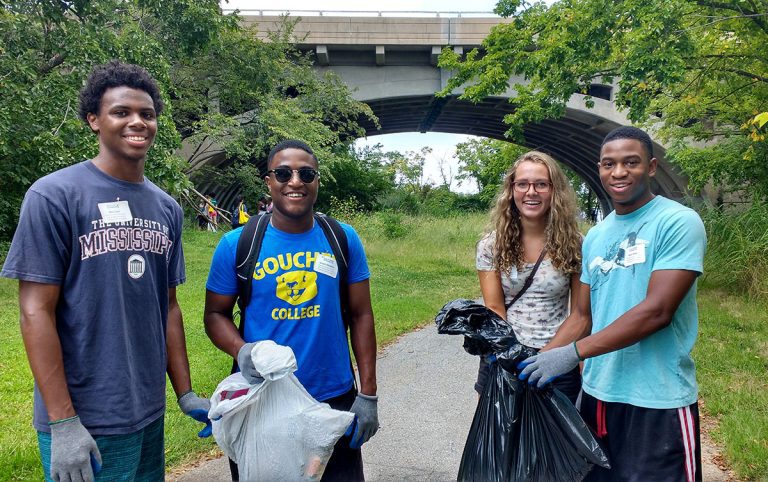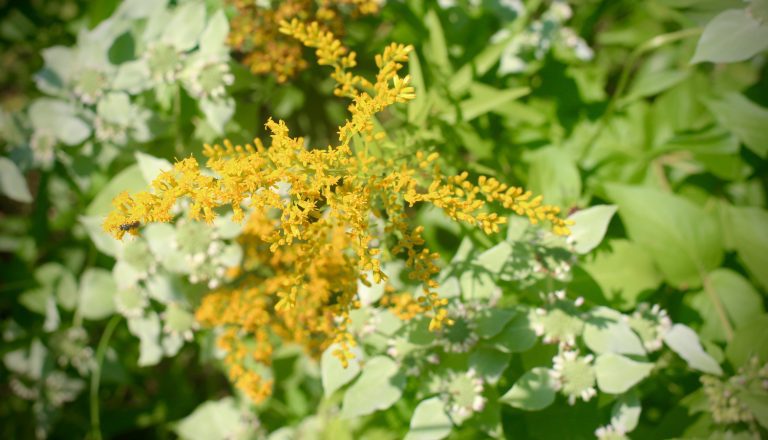Cool and Warm Season Native Plants: What You Should Know

When it comes to native plant gardening, a little planning goes a long way.
At Herring Run Nursery, one of the first planning questions we ask our customers is “when do you want to plant?”
And the truth is that trees and shrubs can, with the right precautions, be planted almost year-round but different types of perennial native plant gardens are best planted at different times of year.
We split perennial grasses and wildflowers into two categories based on their preferred growth period: cool season and warm season.
Cool Season Plants
Cool season plants tend to grow most when soil conditions are cool, usually in Spring and Fall. When the heat of Summer sets in, these plants tend to either stop growing or else go completely dormant.
Usually, these plants are also shade-loving plants. They’ve evolved to perform their photosynthesis and blooming during the times of the year when the angle of the sun is lower (so that light reaches under the forest canopy better) and before the trees have leafed out.
As a rule, shade-loving plants like our spring-blooming wildflowers, ferns, and sedges are best planted either in Spring or Fall.
Warm Season Plants

Many of our showiest native flowers and grasses do most of their growing in the warm soils of Summer.
Sun-loving plants like asters, goldenrods, black-eyed Susan, and most native grasses are best planted at the end of Spring and even in the Summer for best growth.
All new plants will need to be watered and maintained at the beginning, and summer planting can increase that need, but planting warm season plants into warm soil increases the chances that they will thrive.
So, When Should I Plant?
If you are planting in a shady spot, you can safely plant in April, May, late September, or early October.
This way you are putting your plants into ideal soil conditions and still giving them a chance to establish roots before Winter.
If you are planting in a sunny spot, we strongly encourage you to be patient in the Spring. You can spend April and early May finishing up your site preparation, but you should hold off your actual plant installation until after Mother’s Day.
One More Thing
Many of the most aggressive native plants are either cool-season plants or have longer growing seasons than our native plants. This allows them to get a jump start on growth while many of our plants are still dormant.
Even in very sunny conditions, we encourage you to experiment with including native cool-season plants in the planting to help provide some competition with the invasive plants.
For instance, even thought Pennsylvania sedge (Carex pensylvanica) is typically a shade-loving plant, we have seen it thrive in sunny meadow installations. When the taller perennials and grasses start filling in, they shade the shorter sedge during the toughest months of Summer. And the sedge provides a groundcover in Spring to help forestall the encroachment of native plants.
What’s Available When?
 At Herring Run Nursery, we try to avoid selling plants when they are still dormant.
At Herring Run Nursery, we try to avoid selling plants when they are still dormant.
This means that many sun-loving plants, like milkweed and grasses, are not typically available at our April plant sales.
But those early plant sales are great times to buy native azaleas, rhododendrons, mountain laurels, and the wide host of shade-loving perennials.
We will be announcing our Spring 2014 plant sale dates soon: sign up for Blue Water Baltimore’s monthly email newsletter to get up-to-date information about Herring Run Nursery and Blue Water Baltimore both.


